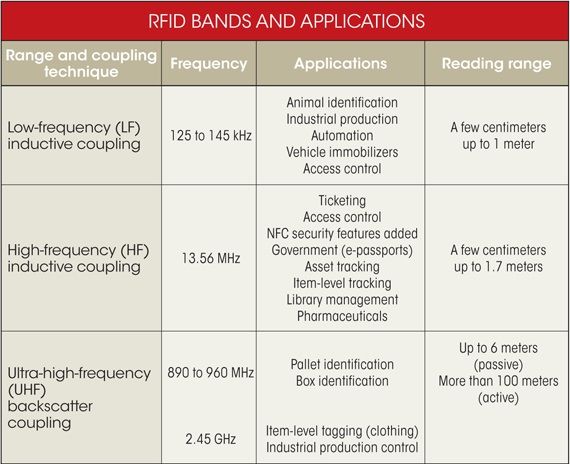At the moment you arrive at the office this morning, you may have used 4 radio frequency tags (RFID) without knowing it: when you insert the car key and turn off the anti-theft lock system circuit; When you drive through an unpaid toll booth to pay for it automatically; when you use your mobile phone to pay for morning coffee, when you use your ID to register into the office. RFID may not be widely available, but it is gradually becoming successful.
The first passive transponders powered by RF inputs date back to the early 1970s, as were the case with most of today's RFID applications. It is the gratifying progress of today's semiconductor technology that makes RFID really take off.
In the commercial market, RFID offers unprecedented opportunities to increase productivity and improve the user experience by providing very granular data and automating services such as payment and record retention. RFID is widely used in a variety of applications, such as livestock identification, retail inventory management, medical record management, electronic non-stop charging, e-passports, and more recently, which will be an important driver of specific RFID technologies.
The market for RFID tags (identity part of RFID) is growing rapidly and is expected to accelerate. For example, IDTechEx predicts that the number of passive RFID tags will increase from less than 3 billion in 2011 to about 250 billion in 2021.
From an engineering perspective, RFID is not a single technology, it varies with frequency. It can use a variety of carrier frequencies, but three of them dominate (see Table 1). The low frequency (LF) uses the 125kHz to 135kHz band and the high frequency (HF) operates at 13.56MHz. UHF (Ultra High Frequency) is mainly used in the 865MHz to 955MHz band, although it may also include the 2.4GHz band.

Table 1: RFID Bands and Applications
Most RFID system design work is focused on the reader system. The application and characteristics of transponders (labels) designed and manufactured by semiconductor companies will primarily determine the design of the reader. In general, there are two types of tags that can be used to communicate with readers: active tags with embedded batteries, and passive tags without batteries. Passive tags are more common, and this article will only discuss passive tags.
Introduction
SCOTECH manufactures a full range of oil immersed power transformers including generator step up transformer, substation step down transformer, mobile Substation Transformer and other different types, our maximum capacity and voltage is up to 300MVA 330KV, with the advanced design and thorough quality management system, we had become one of the most reliable Power Transformer manufacturers in China. we do not compromise on the quality, we ensure that each one of our delivered units has passed the most strictly testing and that makes us confidently to provide the longest quality warranty to our customers. We export our power transformers to all major global markets.
Scope of supply
SCOTECH`s oil immersed power transformers Including generator step up transformer, substation step down transformer, Mobile Substation Transformer and other different types.
Voltage level: 132KV, 230KV, 330KV.
Rating level: up to 300MVA
Standards
SCOTECH`s oil immersed power transformers are designed and manufactured in accordance with all major international standards (IEC, ANSI, UL, CSA etc.)
Why SCOTECH
Long history- Focus on transformer manufacturing since 1934.
Technical support – 134 engineers stand by for you 24/7.
Manufacturing-advanced production and testing equipment, strict QA system.
Perfect service-The complete customer service package (from quotation to energization).
230Kv Power Transformer,230Kv Electrical Power Transformer,Power Transformer Up To 230Kv,230Kv Step Up Power Transformer
Jiangshan Scotech Electrical Co.,Ltd , https://www.scotech.com